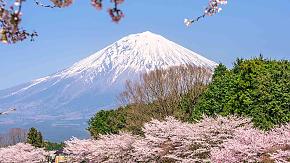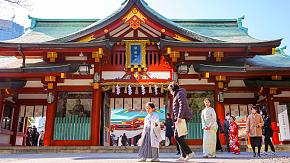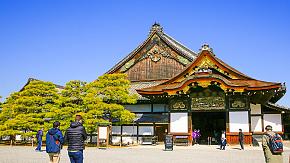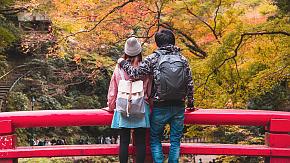Itinerary Summary
| DAY | PLACE | HIGHLIGHTS |
| 1 - 3 | Osaka | Osaka Food Walking Tour, Free Time to Kobe and Himeji |
| 4 | Hiroshima | Itsukushima Shrine, Atomic Bomb Dome, Peace Memorial Museum |
| 5 - 6 | Kyoto | Fushimi Inari Taisha, Nijo Castle, Nishiki Market |
| 7 - 8 | Tokyo | Senso-Ji Temple, Meiji Shrine, Harajuku, Nakamise Shopping Street |
| 9 | Mt. Fuji | Mt. Fuji, Lake Kawaguchiko, Oshino Hakkai, Arakurayama Sengen Shrine |
| 10 | Tokyo | Departure |
About This Trip
With this Japan 10-day itinerary, discover the highlights of charming Kyoto, Tokyo, Hiroshima, and Osaka. Try some authentic Japanese food in Osaka first, then learn about the historical side of Hiroshima. Explore ancient Kyoto's Fushimi Inari-Taisha, capture Tokyo's top sites like Senso-Ji Temple and Meiji Shrine, and take a leisurely day trip to admire the iconic Mount Fuji.
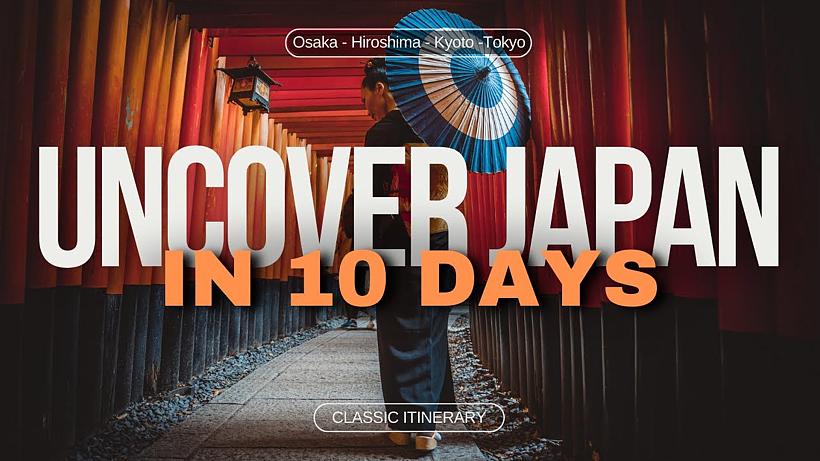
Itinerary
Upon arrival in Osaka, be greeted by a private driver who will transfer you to your hotel. Check in and have the rest of the day at leisure. Recommended spots for Osaka night views include Dotonbori, Umeda Sky Building, Osaka Aquarium Kaiyukan, and Abeno Harukas 300 Observatory.
- Osaka
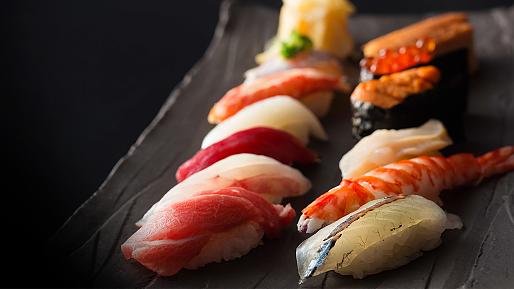
Today, experience the authentic flavors of Osaka via a 3-hour food walking tour (shared tour). Explore local neighborhoods like Shinsekai, Namba, and Dotonbori with a knowledgeable guide while sampling iconic Osaka dishes such as takoyaki, kushikatsu, croquettes, and traditional sweets.
The rest of the day is free to explore Osaka at your own pace. Climb the Osaka Castle and visit inside to feel its history, or enjoy shopping inside the Umeda Sky Building after overlooking the city skyline from the Floating Garden Observatory.
- B
- Osaka

Enjoy a free morning at your disposal before finding your way to the railway station for the Shikansen bullet train to Hiroshima (about 1.5 hours).
Beyond Osaka exploration, try the popular half-day trip to nearby Kobe for some of Japan's top sake (rice wine) and beef; and continue to Himeji, where you can see the UNESCO-listed Himeji Castle surviving from typhoons, earthquakes, and wars, looking like an elegant white heron extending its wings in flight.
Upon arrival, guide yourself to the hotel and then enjoy the rest of the day at leisure.
- B
- Hiroshima
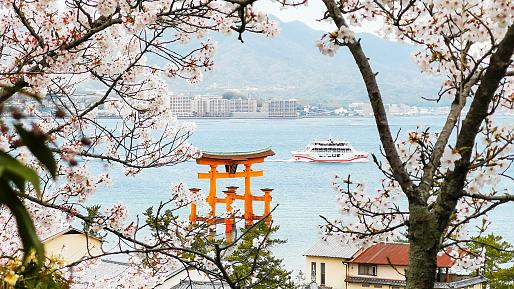
On the 4th day, explore Hiroshima highlights with your private guide via public transportation.
Board a ferry to Miyajima Island to visit the iconic Itsukushima Shrine, whose vermilion torii gate appears to float on the sea at high tide. Take your time there to stroll the nearby streets, or choose a local restaurant for lunch at your leisure (own expense).
In the afternoon, return to Hiroshima by ferry and visit Hiroshima Peace Memorial Park, including the Peace Memorial Museum and the Atomic Bomb Dome, the sole structure remaining near the bomb's hypocenter.
- B
- Hiroshima

After breakfast, find your way to the railway station for your train to Kyoto (about 2 hours).
Upon arrival, head to your hotel on your own and have the rest of the day at your disposal - how about a stroll around the historic entertainment quarter, Gion, for chances to encounter finicky-dressed Geisha, the very embodiment of old Kyoto? If you wish for a more immersive experience, we can help book a fantastic Geisha show with a traditional tea ceremony at your request (optional at an additional fee).
- B
- Kyoto
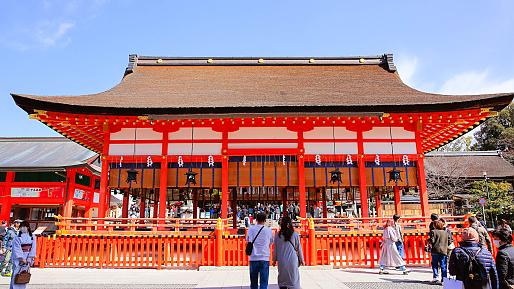
Continue your Kyoto exploration with your private guide by public transportation.
Visit Fushimi Inari Taisha, with thousands of vermilion torii gates lining the forested pathways of Mount Inari. The following is Nishiki Market, a lively food market for your gourmet wonder. Sample local specialties, and enjoy free time here for lunch at your own pace.
Afternoon is the time for Nijo Castle, a UNESCO World Heritage Site and former residence of the Tokugawa shoguns, known for its elegant gardens of blossoms and "nightingale floors" that chirp as you walk.
- B
- Kyoto
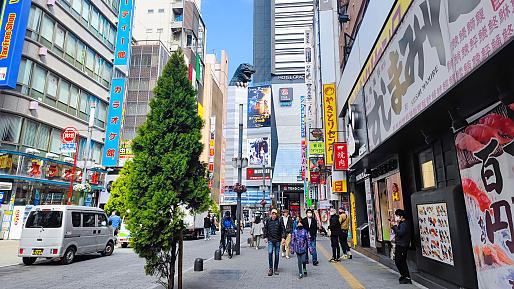
Pack your package and snacks after breakfast, guide yourself to the railway station for the following 3-hour Shinkansen ride to Tokyo.
While finishing your hotel check-in, the rest of the day is free for your exploration. The huge department store in Ginza is ideal for some shopping, or checking out the restaurants and pubs in Shinjuku. If you are into anime or travel with kids, Akihabara will be to your liking.
- B
- Tokyo
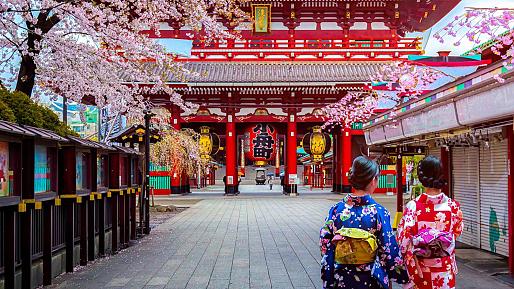
Enjoy your Tokyo guide tour today by public transportation. Begin with a visit to Meiji Shrine, a peaceful forest sanctuary dedicated to Emperor Meiji and Empress Shoken. Not very far from the shrine is Harajuku, ideal for experiencing Tokyo's youthful street culture, from lovely Lolita to colorful Decora. Take your time there and find lunch at your leisure.
Head to Asakasa in the afternoon, where you can walk along the lively Nakamise Shopping Street, lined with traditional snack and souvenir shops leading to Tokyo's oldest Buddhist temple, Senso-ji.
- B
- Tokyo
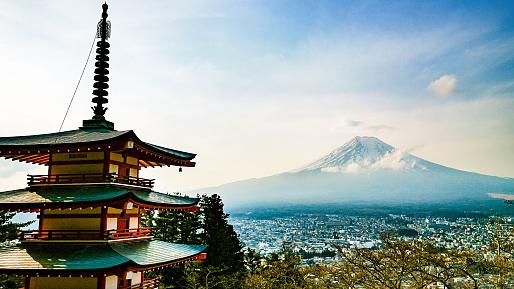
Take a Mt. Fuji day trip from Tokyo today before your final farewell to Japan. Journey to Oshino Hakkai with your private guide in a comfortable vehicle, and capture those crystal-clear spring ponds fed by Mt. Fuji's snowmelt.
Continue to Arakurayama Sengen Shrine, which offers some of the best rewards after a short walk up the steps: a panoramic view of Mt. Fuji, dotted by an elegant pagoda and seasonal charms. Later, enjoy either a relaxing Lake Kawaguchi cruise for a closer mountain view with reflections, or a ropeway ride offering elevated views of Mt. Fuji and lakes.
- B
- Tokyo
Farewell Japan! Enjoy free time until your private driver picks you up at the airport for your homebound flight.
- B
What Our Clients Say
Explore the latest verified reviews of Odynovo's travel services on Tripadvisor, Google, Trustpilot, Product Review and more trusted platforms.
How It Works
-
Tell us your tour ideas Complete our inquiry form
-
Discuss with a travel specialist Customize your itinerary
-
Securely book your tour Confirm when you're satisfied
Quick Question



